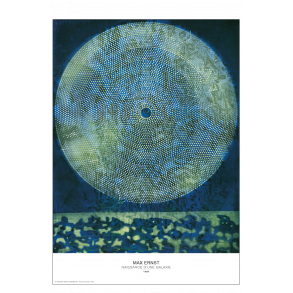Are you ready to become "poster-filled" in rumbling darkness on an exoplanet "father's father away"? PSO J315.5-22 by Joby Harris from NASA's Jet Propulsion Laboratory is a youthful, retro-futuristic, fantasy-spacy poster. Less can simply not do that. The inspiration from art nouveau is not to be mistaken, although the style has been picked up with the futuristic touch and motif (not least). The blue-purple color, which at one and the same time is warm and cold, as well as the silver-like effects gives an almost magical, spacy twilight mood. The white, dancing "silhouettes" will appear as star dust, sprinkled over a vibrant, mysterious planet. It is just before you can hear the music, clinking glass and faint laughter in the distance - and just before you can taste the elegant, luminescent and sparkling drink. According to the poster, this is a spectacular and sophisticated planet where the party never ends: "The planet with no star - where the nightlife never ends". But how can it be that a planet can exist in such total darkness? PSO J318.5-22 is what you call a "rogue" planet - or with a more scientific term: "extra-solitary object". These terms cover cases of planets that do not orbit any star. PSO J318.5-22 was the first extrasolar planet that was discovered - and it was first discovered in 2013. What makes the discovery so important and interesting is that it is such a rare sight. There are, of course, plenty of asteroids and meteors floating around for themselves. But planets are a completely different matter - they usually always revolve around a star. How planets end up alone, you do not know for sure. One theory is that they are false stars. Another goes on to say that they are planets, which at a young age have been pushed out of their solar system after a clash with another planet.





